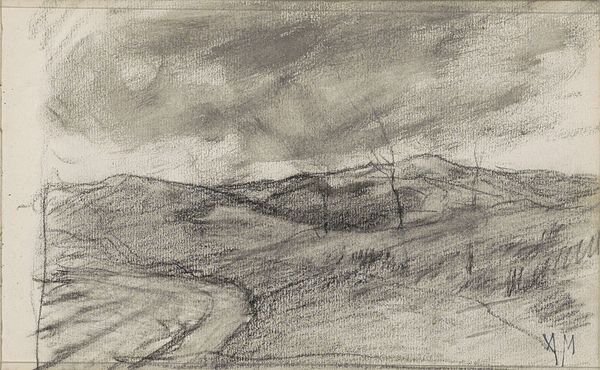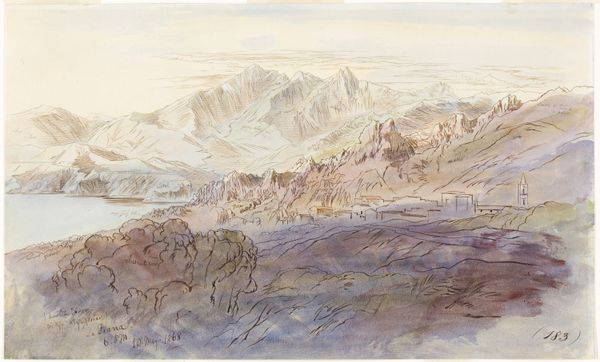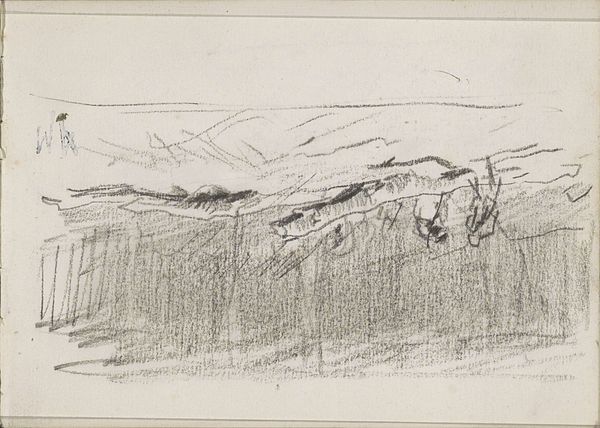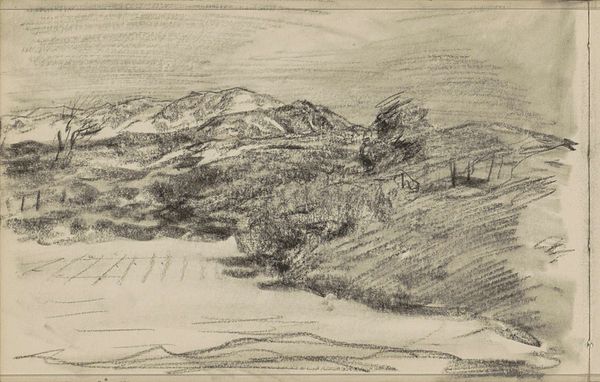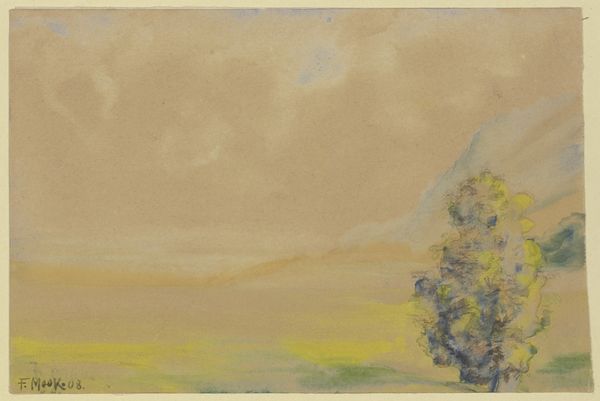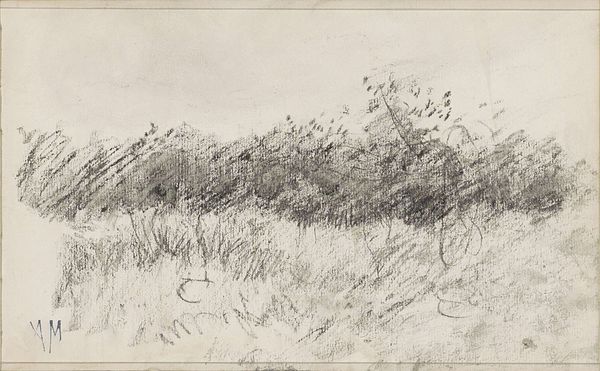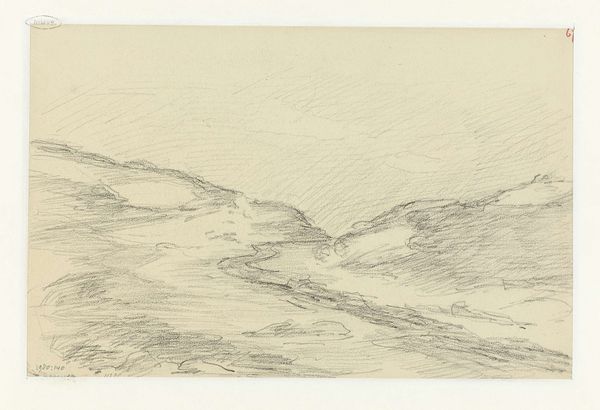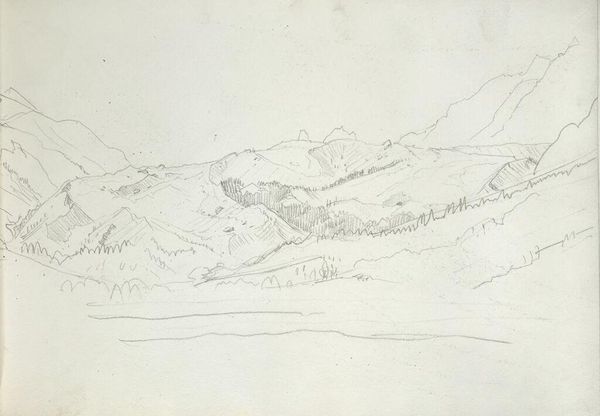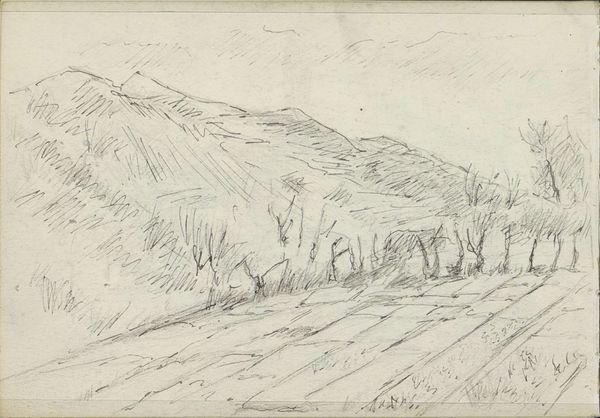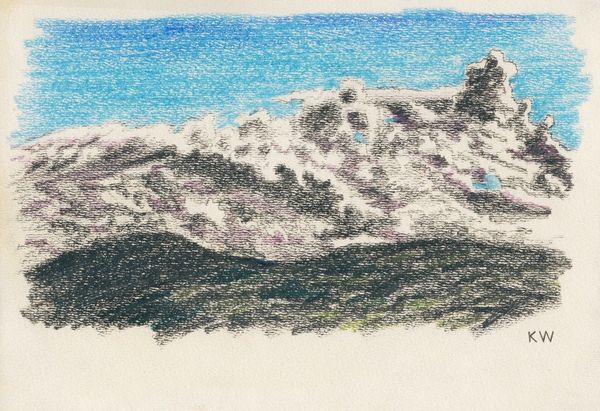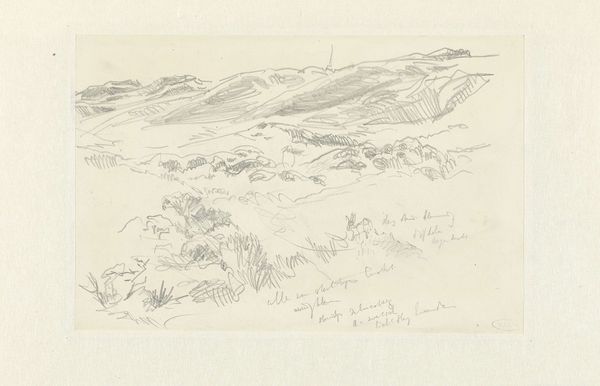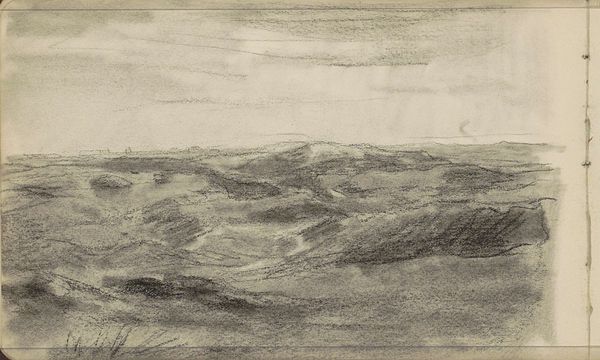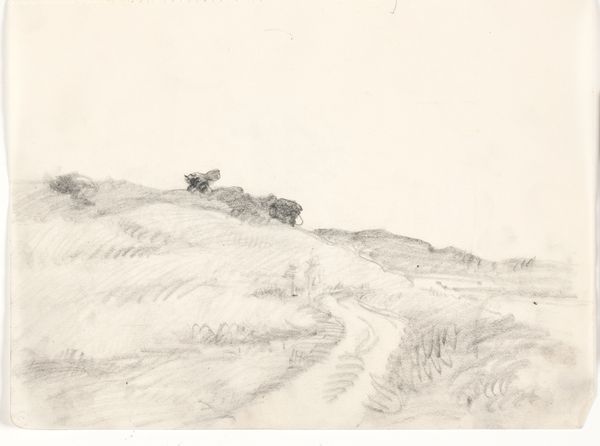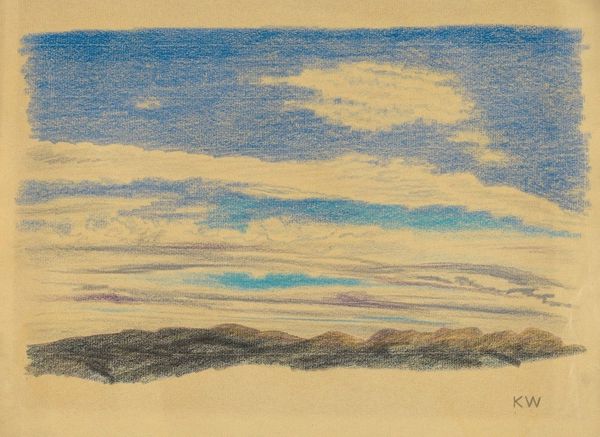
Copyright: Rijks Museum: Open Domain
Editor: This is Johan Antonie de Jonge’s "Duinlandschap," or "Dune Landscape," created sometime between 1881 and 1927 using pencils. There's a quiet stillness to this piece, a subtle blending of color and texture. What symbols do you see at play within this composition? Curator: What immediately strikes me is the use of the dune itself as a liminal space. Dunes are transient, existing between the solidity of the land and the boundlessness of the sea. Does this transience evoke any particular emotion or feeling in you? Editor: It makes me think about the passage of time and how landscapes change. Are there any other symbols we should consider here? Curator: Yes, the sky itself, with its fleeting clouds rendered in pencil, holds potent symbolism. Think about how cultures across time have used the sky to represent aspiration, the divine, or the ephemeral nature of existence. The varying colours in the sky, almost bruise-like, might also signal a storm coming, implying impending change and uncertainty. Do you think the artist intentionally invoked these layered readings? Editor: Possibly. The darker sky does create a feeling of unease. The dune landscape seems peaceful, yet the sky hints at something brewing, a possible contrast between the conscious and the unconscious, maybe? Curator: An astute observation. Remember that the artist's cultural context would influence the imagery. During this period, artists were grappling with rapid industrialization and urbanization. Could this landscape also be read as a longing for a more untamed, natural state, a cultural memory of simpler times? Editor: That adds a new layer of understanding! I hadn't considered that perspective. Curator: It's amazing how a seemingly simple landscape drawing can hold so much cultural and personal significance once you begin to unpack its visual language. Editor: Definitely, it makes me appreciate how artists use visual elements to carry deeper cultural meanings. Thank you!
Comments
No comments
Be the first to comment and join the conversation on the ultimate creative platform.
